The Cordillera Blanca is a snow-capped mountain range in the Peruvian Andes in South America and got its name from its signature white peaks. Cordillera Blanca translates to "the White Mountains".
The range has several peaks over 6,000 meters and supports over 700 glaciers. The highest tropical mountain in the world, Huascarán, is located in the Cordillera Blanca.
This guide will provide you with all the information you need to know about the Cordillera Blanca.
The Cordillera Blanca
Length: 180km
Geology
The Cordillera Blanca was formed along with its parent range the Andes when a shift in the tectonic plates occurred.
The mountains were created about 45 million years ago when the subduction of oceanic crust under the continental crust created a compression along the western side of South America. This shift had already been in progress for 140 million years before the mountains formed.
A large batholith forms the base for the Cordillera Blanca mountains with granodiorites forming the elevated peaks. Folded sedimentary formations and volcanoes are also present in the formation, as well as glacial and fluvial deposits.
The Cordillera Blanca houses 722 individually recognised glaciers, multiple lakes and many peaks, 16 of which reach elevations of 6,000 meters and above.
Topography
The Cordillera Blanca form part of the Cordillera Occidental, which is one of the ranges in the Andean Mountains.
The mountain range is located in Peru and is part of the Peruvian Andes region. It spans in a north to south direction for about 180km in the Ancash region of the country.
The Cordillera Blanca is the most extensive and highest tropical mountain range in the world. It is covered with ice, making it the biggest concentration of ice in Peru.
The range also serves as a continental boundary between the Santa River, which lies on the western side and drains into the Pacific Ocean, and the Marañón River, which flows on the eastern side and leads to the Atlantic Ocean.
Climate
The Cordillera Blanca's dry season runs from May through to September. April to October is the winter season although the months are sometimes referred to as the Andean Summer. The mountain range experiences rainy summers as the wet season occurs from November to April. Rainfall peaks between January and March.
Average temperatures are fairly consistent throughout the year with a mean daily temperature of 64˚F (18˚C) and nights dropping to below 32˚F (0˚C). Temperatures in the Cordillera Blanca also depend on altitude as it gets much colder in the upper reaches of the mountains.
Wildlife and Plants
The flora and fauna of the Cordillera Blanca have had to adapt to the climate and altitudinal range of the mountains. The main types of vegetation are found in the inter-Andean valleys. Xerophytic plants grow at lower elevations. These are plants that have adapted to survive in regions with very little access to liquid water.
Shrubs and grasses occur at higher elevations as well as Puna grassland and areas of high Andean forests. Most of the plants found in the Cordillera Blanca have adapted to the severe solar radiation, cold temperatures and low water availability by having pubescent leaves which helps to prevent water loss through solar radiation.
The largest species of bromeliad, the Puya raimondii, which is also known as Queen of the Andes, can be found here reaching heights up to 15 meters.
The wildlife in the Cordillera Blanca is quite diverse with about 120 recorded bird species and numerous mammal species. The Near-Threatened colocolo, or Pampas cat, can be found in the grasslands and dry forests up to about 5,000 meters on the mountains. Andean bears, taruca deer, puma, Andean fox, northern viscacha and the endangered Andean mountain cat can all be found in the area.
Mountain Regions in the Cordillera Blanca
Huascarán National Park
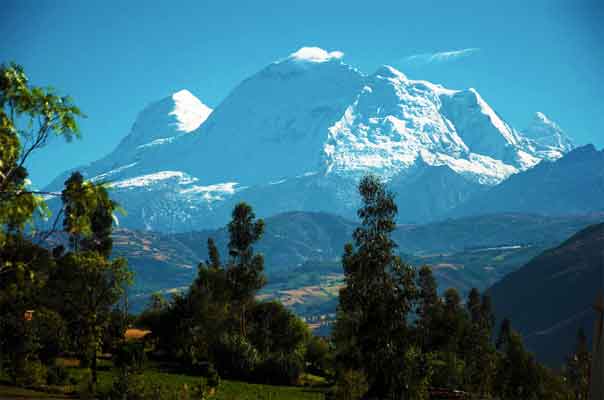
Photo by Marcos Lana
The Huascarán National Park covers the majority of the Cordillera Blanca mountain range. The park has an area of about 3,400 km2 and is a designated UNESCO World Heritage Site due to its unique biodiversity.
Several of the Cordillera Blanca's highest peaks are located within the park, including Huascarán, at 6,768 meters, Copa, Huandoy and Huantsán. The Huascarán National Park also features 660 of the mountain range's tropical glaciers and 300 glacial lakes.
Northern Cordillera Blanca
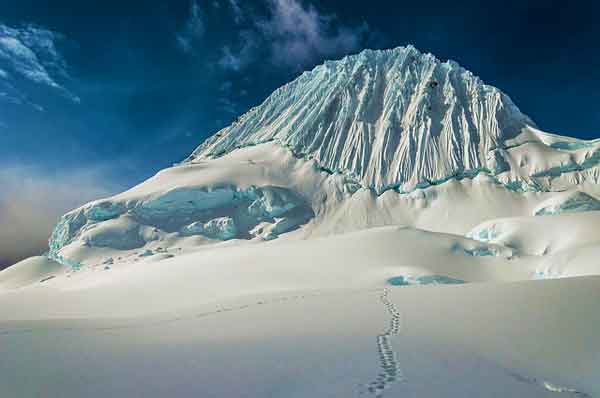
Photo by Ferran Altimiras
The Cordillera Blanca can also be divided into a northern section and a southern section.
The northern section covers the Huascarán, Alpamayo and Huandoy portions of the Cordillera Blanca. The most popular treks in this region are the Santa Cruz Trek and the Alpamayo, which was once voted to be the most beautiful mountain in the world.
Southern Cordillera Blanca
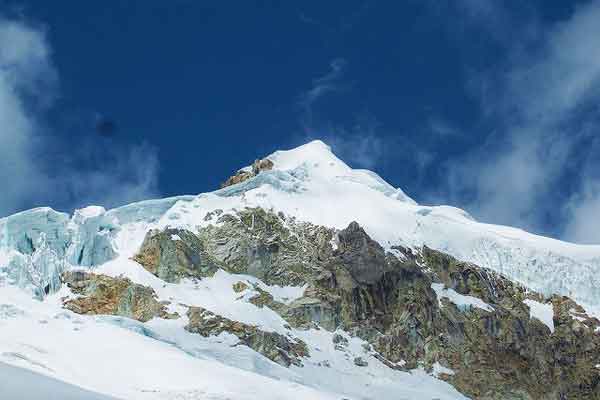
Photo by Znap
The Southern Cordillera Blanca covers the Copa, Huantsan, Toclaraju, Urus Ishinca sections of the range. This region is most famously known for the beautiful Ishinca Valley, which is a popular trekking destination.
Ishinca and Urus Este are the most common peaks to ascend in this region. The most southern stretches of the Cordillera Blanca is guarded by two massive peaks, Chinchey and Huantsan. They are some of the fiercest mountains in Peru, which only the most advanced and experienced of mountaineers attempt to climb.
Notable Mountains in the Cordillera Blanca
The Cordillera Blanca consists of many peaks, with 16 reaching elevations over 6,000 meters and another 17 sitting over 5,000 meters above sea level.
Here are some of the most notable mountains in the Cordillera Blanca range.
Huascarán

The Huascarán mounatian contains the is the highest peak in the Cordillera Blanca mountain range: the Huascarán Sur at an elevation of 6,768 meters. This is the highest peak in Peru and is the fourth highest summit in the Western Hemisphere.
The summit of Huascarán is one of the farthest points on Earth's surface from the centre of the Earth. The top of Huascarán is also the location with the smallest gravitational force on Earth.
Huascarán was named after the 16th century Inca Emperor Huáscar. The summit of Huascarán Sur was first climbed in 1932 by a German-Austrian expedition team.
Alpamayo

Alpamayo is one of the most notable peaks in the Cordillera Blanca range as it stands in an almost perfect pyramid of ice that is impossible not to notice. It was once voted the most beautiful mountain in the world and lives up to its reputation.
The peak sits at 5,947 meters above sea level and is a summit that only experienced Alpine climbers attempt.
Artesonraju
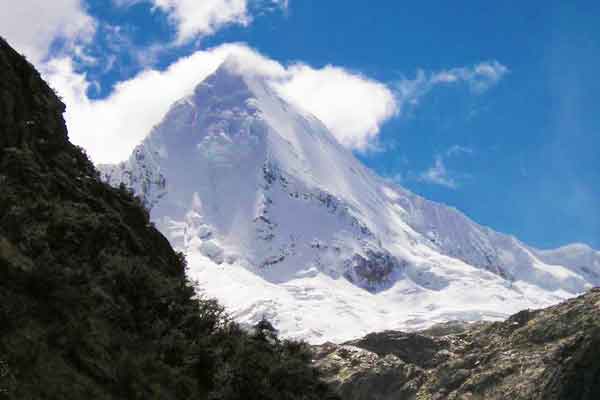
Photo by Eduardo Astudillo
Artesonraju is a prominent peak within the Cordillera Blanca and has an elevation of 6,025 meters. It is thought to be the mountain peak featured in the Paramount Pictures logo.
Artesonraju is one of the more difficult climbs in the Cordillera Blanca range and it is rarely successfully climbed.
Ishinca

Nevado Ishinca, or simply Ishinca, is one of the most well known mountains in the Cordillera Blanca range. Its name means "snow covered mountain".
Ishinca is mostly climbed as an "acclimatization mountain" to prepare mountaineers for the mountains over 6,000 meters.
The mountain's North-West Route was first climbed in 1964 by J. Fonrouge, H. Salger, H. Schmidbauer W. Lindaver, and V. Staudacher.
Huandoy
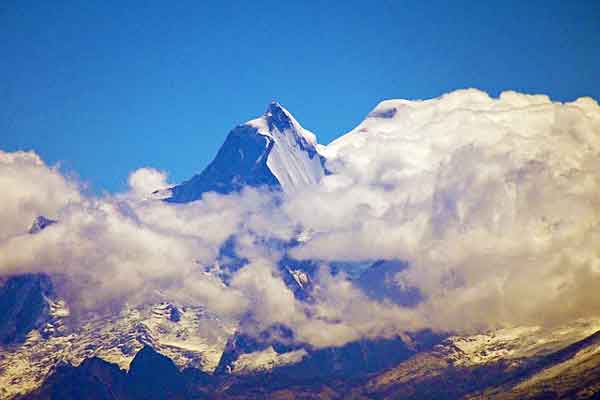
Photo by Antonio Chávez S.S.
Huandoy has an elevation of 6,360 meters and is the second highest mountain in the Cordillera Blanca, following Huascarán. These two tall peaks are situated quite close to one another and are divided by the Llanganuco glacial valley.
The mountain has four distinct peaks, all of which sit over 6,000 meters above sea level: Huandoy, Huandoy-East, Huandoy-West and Huandoy-South.
Notable Hikes in the Cordillera Blanca
Due to its many high peaks and natural beauty, the Cordillera Blanca is a very popular hiking and mountaineering destination.
Here is some information about the most notable and popular hikes in the Cordillera Blanca mountains.
Santa Cruz Trek
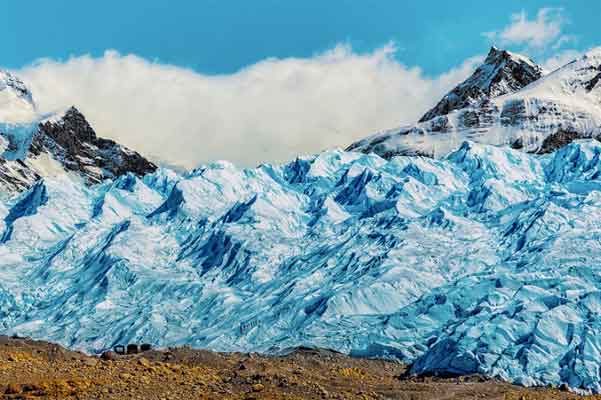
Photo by Valter Patrial
The Santa Cruz Trek is one of the most well known hiking trails of the Cordillera Blanca. The trek is a four day journey that spans almost 50km, taking you through beautiful Andean valleys and over two high passes from where you can see stunning views of the highest mountains in the range.
The route is well marked and only moderately challenging so you don't have to be an extremely fit and experienced hiker to take it on.
Laguna 69 Trek (Day Hike)
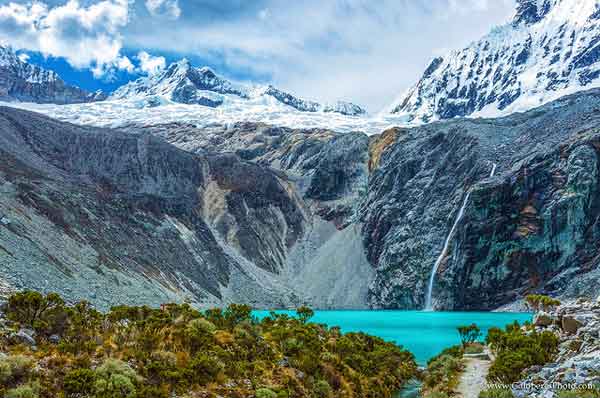
Photo by Alexandre Patrier
Laguna 69 is probably the most popular trek in the Cordillera Blanca. It is a day hike that leads you to a breathtakingly beautiful Laguna 69 lake that sparkles a magnificent shade of blue.
This hike is a great trail for acclimatization as it starts at 3,600m and takes you up to 4,600m. While the final ascent to the lake is quite challenging, the scenery you'll find at the top is well worth it.
Alpamayo Base Camp Trek
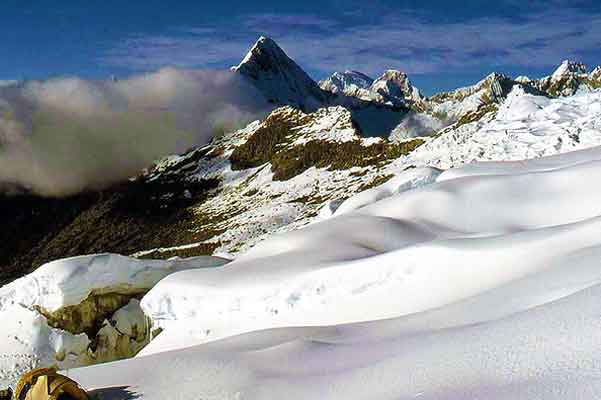
The Alpamayo Base Camp Trek is a long and challenging trek for experienced hikers to test their strength and endurance over 6 or 7 days. The remote trek takes you on a secluded route which showcases the two highest peaks in the Cordillera Blanca as well as the near perfect peak of the Alpamayo - the "most beautiful mountain in the world".
Laguna Churup Trek (Acclimatisation Day Hike)
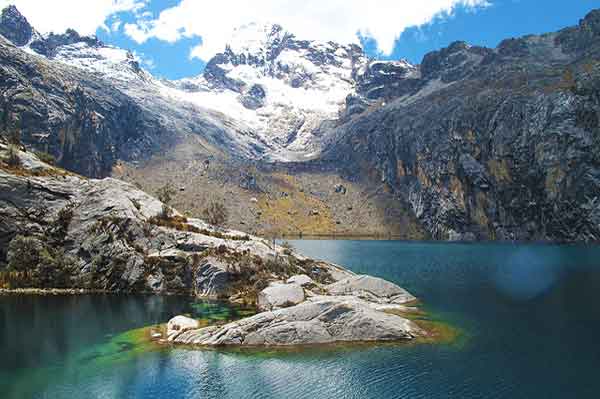
Photo by itinerantlondoner
The Laguna Churup trek is another popular day hike that helps hikers with acclimatisation before they attempt the higher peaks in the Cordillera Blanca. The trail takes you to a serene alpine glacial lake that is surrounded by mountain.
You may also like:
- Guide to Machu Picchu hikes
- Guide to the Huayhuash trek
References: Britannica, Wikipedia, Lonely Planet
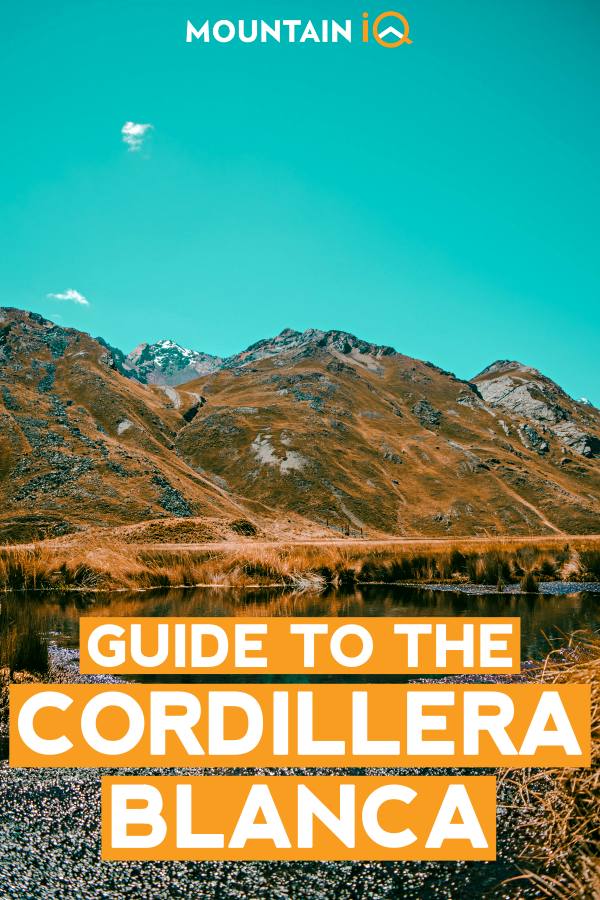

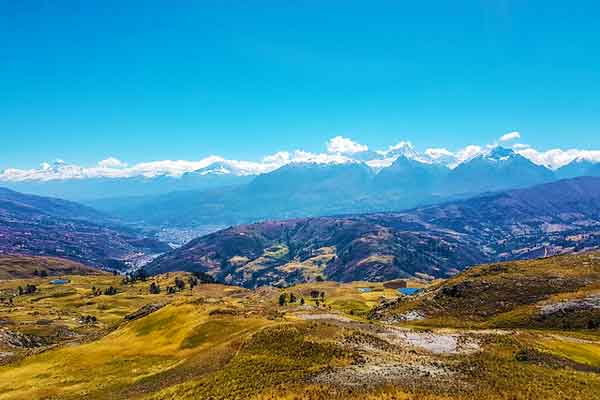
Useful and organized information. Thanks so much.